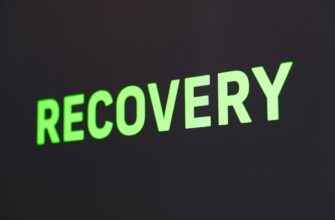💎 USDT Mixer — Your Private USDT Exchange
Mix your USDT TRC20 instantly and securely. 🧩
No sign-up, no data logs — just total privacy, 24/7. ✅
Ultra-low fees starting at just 0.5%.
- Why Offline Account Encryption Matters More Than Ever
- What Does “Encrypt Account Offline” Really Mean?
- Essential Tools for Offline Encryption (Beginner-Friendly)
- Step-by-Step: Encrypting Account Data Offline in 5 Steps
- Critical Best Practices for Reliable Encryption
- Common Beginner Mistakes to Avoid
- FAQ: Offline Encryption for Beginners
- Final Thoughts: Take Control of Your Security
Why Offline Account Encryption Matters More Than Ever
In today’s digital world, securing online accounts is crucial—but what about the sensitive data stored offline on your devices? Passwords, financial documents, or personal notes saved locally can be goldmines for hackers if your laptop is stolen or compromised. Offline encryption acts as a last line of defense, scrambling your data into unreadable code that only you can unlock. This beginner-friendly guide demystifies offline encryption, offering simple steps to fortify your accounts without needing constant internet access.
What Does “Encrypt Account Offline” Really Mean?
Unlike cloud-based security, offline encryption protects data stored directly on your device (laptop, external drive, USB). It converts files—like password lists or account backups—into ciphertext using mathematical algorithms. Without your unique key or password, the data remains inaccessible. Think of it as a digital safe bolted to your hardware. For beginners, this approach is ideal: no subscriptions, no ongoing costs, and total control over your privacy.
Essential Tools for Offline Encryption (Beginner-Friendly)
Start with these free, trusted tools—no tech expertise required:
- VeraCrypt: Creates encrypted “containers” (like virtual vaults) for files/folders. Works on Windows, macOS, Linux.
- BitLocker (Windows Pro/Enterprise): Encrypts entire drives with built-in Microsoft security.
- FileVault (macOS): Full-disk encryption for Apple devices via System Settings.
- AES Crypt: Lightweight app for encrypting individual files with right-click simplicity.
Pro Tip: Always download tools from official websites to avoid malware!
Step-by-Step: Encrypting Account Data Offline in 5 Steps
Follow this beginner workflow using VeraCrypt as an example:
- Install & Launch: Download VeraCrypt, install, and open it.
- Create a Container: Click “Create Volume” > “Encrypt a file container”. Choose a save location (e.g., “MyAccounts.vc”).
- Set Encryption Strength: Select AES encryption (default) for robust security.
- Set a Bulletproof Password: Use 12+ characters with letters, numbers, and symbols. Never reuse existing passwords!
- Move Sensitive Data: Mount the container as a virtual drive, then drag account files (PDFs, spreadsheets, notes) into it. Unmount when done.
Your data is now encrypted offline—accessible only via VeraCrypt and your password.
Critical Best Practices for Reliable Encryption
- Backup First: Save unencrypted copies to a USB drive before encrypting. Store it physically secure.
- Password Hygiene: Use a password manager (like KeePassXC) to generate/store complex passwords offline.
- Update Software: Patch encryption tools regularly to fix vulnerabilities.
- Lock When Idle Unmount encrypted volumes after use to prevent unauthorized access.
Common Beginner Mistakes to Avoid
- Using weak passwords (e.g., “password123”) that defeat encryption.
- Storing encryption keys/recovery phrases in plain text files.
- Ignoring backups—encryption won’t protect against hardware failure.
- Forgetting passwords (no recovery options exist with true offline encryption!).
FAQ: Offline Encryption for Beginners
Q: Is offline encryption legal?
A: Absolutely—it’s a privacy right in most countries. Only illegal if used to conceal criminal activity.
Q: Can I encrypt my smartphone offline?
A: Yes! Android and iOS offer built-in device encryption (enable in Settings > Security). For files, use apps like Cryptomator.
Q: How is offline encryption different from cloud services?
A: Cloud encryption (like iCloud) relies on third-party servers. Offline encryption keeps keys/data solely on your device—no internet needed.
Q: What if I lose my encryption password?
A: Data recovery is nearly impossible. Store passwords securely offline (e.g., written in a locked drawer) or use a password manager.
Q: Does encryption slow down my computer?
A: Modern tools like VeraCrypt have minimal performance impact. Full-disk encryption may slightly slow boot times.
Final Thoughts: Take Control of Your Security
Offline encryption empowers beginners to shield account data from physical breaches—no tech wizardry required. By choosing the right tools, following best practices, and avoiding common pitfalls, you transform vulnerable files into impenetrable digital fortresses. Start small: encrypt a folder of passwords today. As threats evolve, this foundational skill ensures your private information stays truly private.
💎 USDT Mixer — Your Private USDT Exchange
Mix your USDT TRC20 instantly and securely. 🧩
No sign-up, no data logs — just total privacy, 24/7. ✅
Ultra-low fees starting at just 0.5%.








